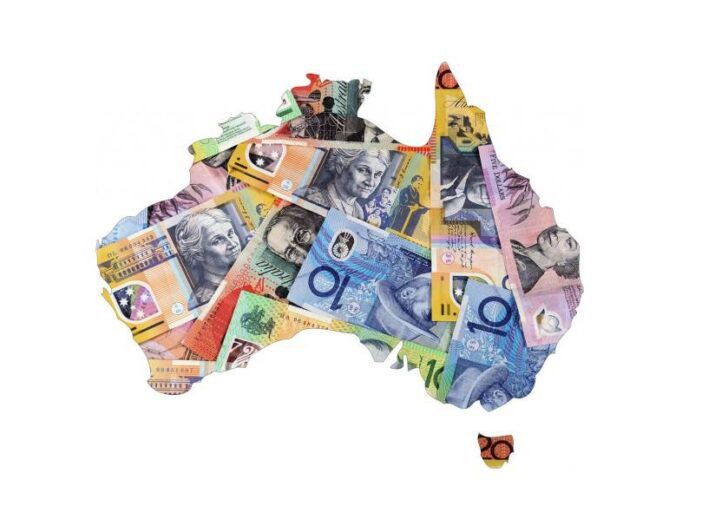Dear Reader,
Oh Australia, aren’t we in a pickle?
In the past when it came to avoiding a recession, we’d dip into the Keynesian playbook and look for answers.
The last two decades, we’ve witnessed our government throw out some taxpayer dollars to keep things going.
Heaven forbid we let the free markets take over.
There’s been all sorts of government intervention to keep people employed, borrowing from banks and buying hours.
The thing is, it appears we’ve borrowed all we could and built everything we can.
To boot, we’re in the process of picking a fight with our biggest customer.
I’ll wager China is in the process of making deals with other resource-rich countries. There’s a whole bunch of third-world countries that will accidently swap their mineral wealth for some roads and bridges.
Meaning that there’s no ‘getting out’ of this recession.
Rather, this isn’t a recession we try and get back to normal. This time we set out to create our new normal.
And perhaps go about creating an economy that doesn’t rely on houses and holes…
How capital flows through an economy
In a paper titled ‘The Urbanization of Capital’, David Harvey analyses how capital flows through an economy.
According to Harvey, there are three circuits in a capitalist society. The primary circuit, the secondary circuit, and the tertiary circuit.
The primary circuit is an economy in the production phase — the ability of a country to produce goods.
In Australia’s case, that was our mining boom. Our spare capacity in both the labour market and available minerals let us exploit the two for a profit to grow the economy.
Or, in simple terms, we had the rocks to sell, the people available, and demanding customers.
For decades, it worked.
The multi-decade mining boom provided incredible amounts of growth for the Aussie economy. We dodged the financial crisis because we were able to supply goods to a buyer with deep pockets.
But according to Harvey’s analysis, too much ‘success’ in the primary circuit results in overaccumulation.
This is something Aussies witnessed firsthand.
Again, in the case of our mining boom, we were supplying far more commodities than the global market demand.
In the case of China, for example, we supplied more iron ore than China wanted. This saw prices fall and company profits shrink towards as the boom unwound.
In turn, firms reduced staff numbers and scaled back production. This led to higher rates of unemployment, while investors moved elsewhere in search of returns.
As a result, mining town populations dwindled — as did the high-paying jobs.
Yet after the primary circuit ends, the capital flows into the secondary circuit, says Harvey.
This is where an economy shifts from producer to consumer.
The secondary circuit is very much about money flowing into fixed investments that relate to building and consumption.
That’s all your houses, shopping centres, and leisure activities. On an individual consumer level, it’s money spent on swimming pools, nights out at the movies, dining out, and even new cars.
Throw in some loose credit policies, and before you know it people are buying $200 toasters and overpriced coffee table books.
This phase is often referred to as the ‘built environment’ and the ‘built environment for consumption’.
Essentially, the economy becomes focused on what it can build, rather than what it can produce.
Just like the primary circuit, there can be excess supply in the secondary circuit. Basically, that point comes when we build much, much more than people want to buy.
Harvey’s argument is that once an economy becomes focused on building for growth, the whole system starts to look shaky.
Harvey also points out that too much credit amplifies these circuits.
And that if any of the circuits are propped up with debt for too long, they create unsustainable bubbles, which have severe ramifications for the economy in question.
And that’s where Australia finds itself today…
Becoming better people
As a country, we still have one more ‘circuit’ to transition to.
Harvey’s research suggests that following a construction boom, money moves into a sector that benefits society much more in the long run.
That is the tertiary sector.
It’s where we invest in science, technology, and other products that have social value.
According to Harvey’s theory, excess supply in construction leads people to invest in science and technology.
He also points out that the secondary circuit — that is, using construction as a driver of economic growth — generally results in some form of a crisis.
If there’s no money to be made in production or construction, life-saving medical investments will attract early investors.
This has a twofold effect.
The economy benefits from new jobs, created in new fields of science and high-tech methods of production.
This results in societal benefits, which improve the human condition.
Once gains from the secondary circuit start to decrease, money moves into the tertiary circuit.
Essentially, this final stage is an investment in society.
Learn why a recession in Australia is coming and three steps to ‘recession-proof’ your wealth. Click here to download your free report.
It’s the part of a capitalist society where lower economic growth is sacrificed for overall population health.
Think of it more as an investment in society overall.
Money flows into science and technology, ideally creating a healthier population. And innovators look for more efficient methods of production and building.
Believe it or not, Australia is about to make this transition.
Each week some state government announces another multibillion-dollar infrastructure project. These are temporary hits that won’t have a lasting impact on the economy. It’s more of the same old playing out.
The real change will come from a bunch of kids not far from starting uni.
The federal government recently put in place a bunch of policies to encourage teenagers to choose degrees in maths, science, and engineering.
All courses that lead to an increase in intellectual capital. Something that is absolutely critical for an economy to transition to the tertiary cycle.
The coronavirus has come along and disrupted life as we know it. Yet it’s about to nudge the Australian economy into a new direction. And the 2020s will be the beginning of our transition.
|
Until next time, |
|
Shae Russell, |

